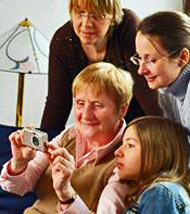In a study by Barry Brown of the Mobile Life Center in Sweden, “The Normal Natural Troubles of Driving With GPS,” global positioning system failures were often found to be the result of driver errors, such as wrong inputs, misreading display, etc.
The study is cited in a recent New York Times article by Randall Stross, a business professor at San Jose State University, that concludes that no technology will ever eradicate this human error.
The article described Dr. Brown's field study of installing video cameras in test vehicles to capture the GPS instructions, drivers' responses, and conversations when things went wrong. In QFD, we call this "going to
gemba" or the place where unscripted user behavior reveals the real truth about customer needs. Gemba visits should be done prior to development to gain knowledge, as well as during design to test and validate solutions.
The conclusion by Dr. Stross reminded me of Dr. Noriaki Kano's model of
Attractive Quality Creation, where he introduced the concept of exciting and expected quality. QFD users, of course, are very familiar with the classical Kano model as well as the QFD Institute's modern
New Kano Model.

Dr. Kano cites one of his early experiments with Mr. T. Yoneyama of Konica, the Japanese camera company that later merged with Minolta.
In their study at film processing and photograph printing labs (also a gemba), they noticed that the largest number of poor quality pictures were those that were out of focus or under exposed. These problems were operator error, not mechanical failures of the camera. Most of these photographs were taken by amateurs who did not have the professional skills to adjust the camera properly, but never complained to the lab or to the camera maker.
Like in the GPS study, Konica could have just blamed the unskilled customers. But with Dr. Kano's guidance, they did something different – they introduced the built-in auto flash in 1974 and the auto focus in 1977, thus revolutionizing the amateur and later professional camera industry.
In other words, if products or services fail to satisfy, makers should adopt this attitude that their design is at fault, not their customers. Positively stated, these failures are actually opportunities to create exciting products with disruptive technologies.

